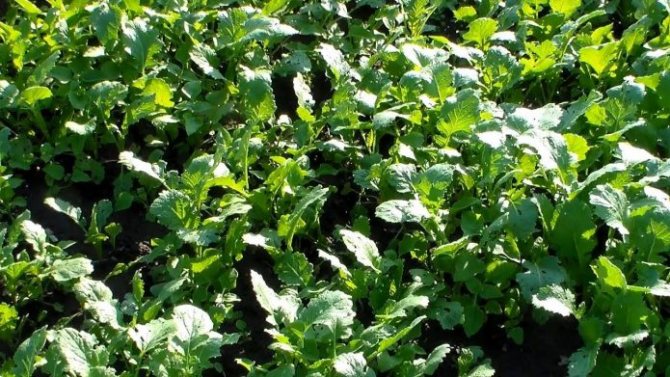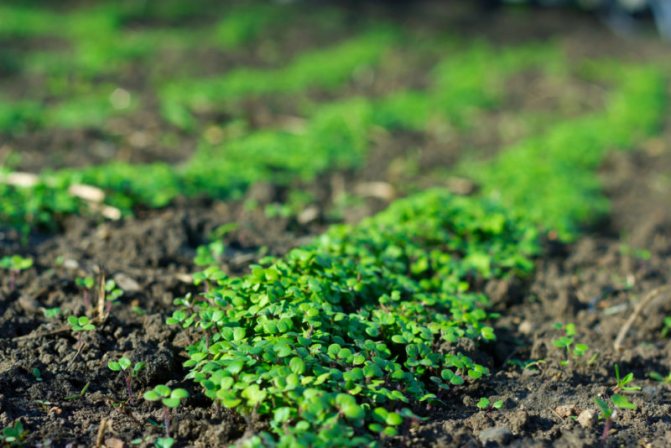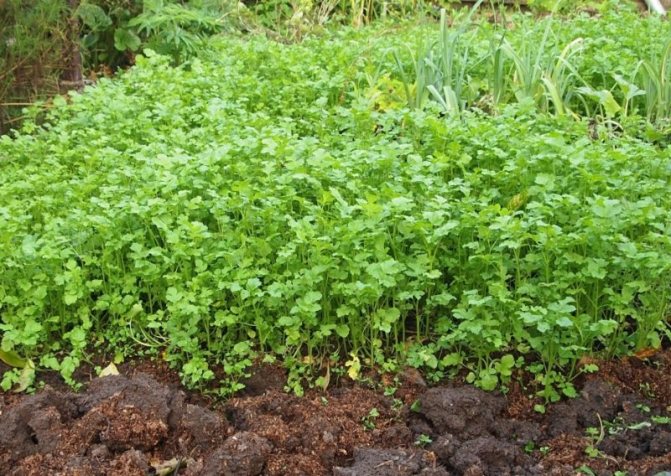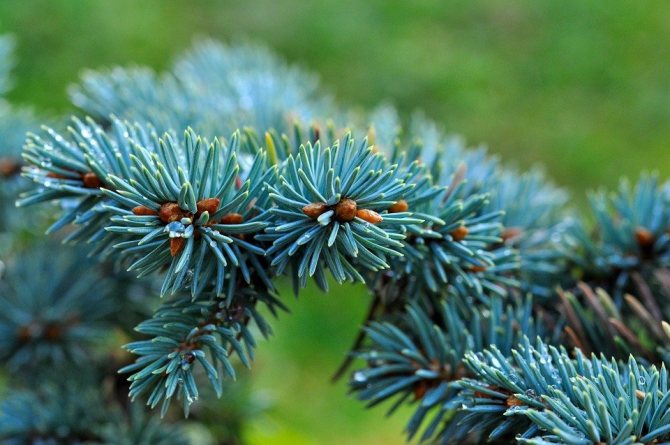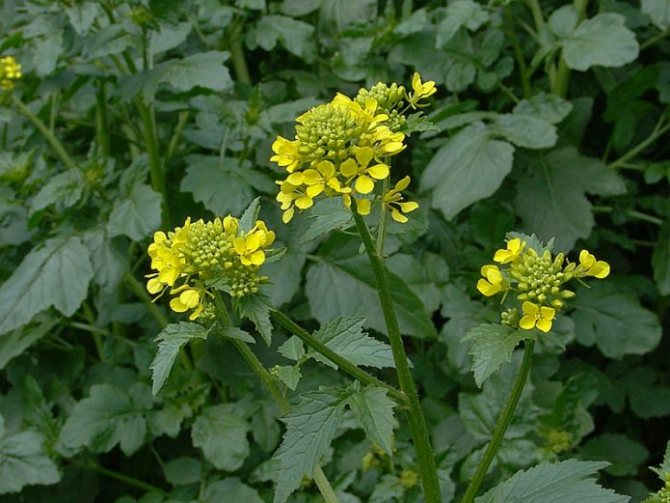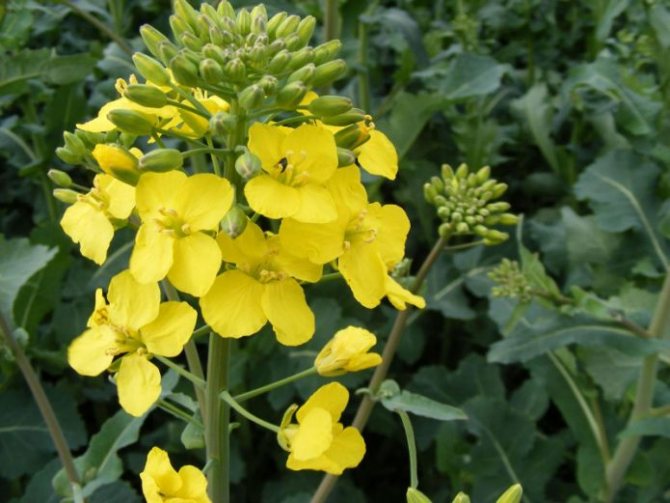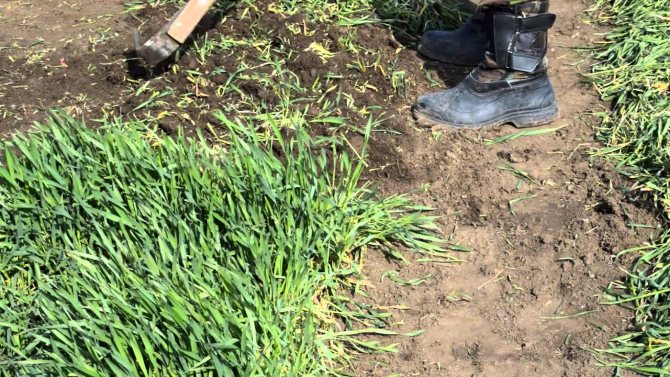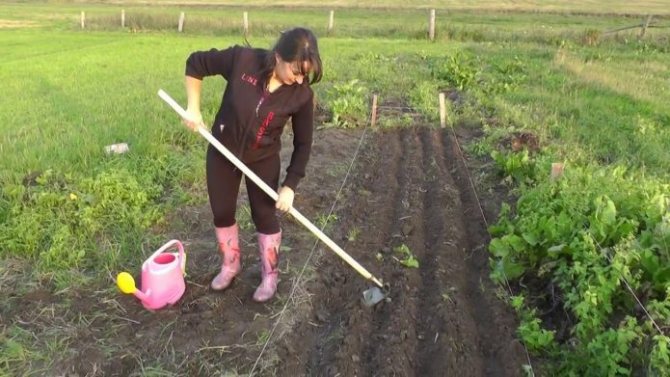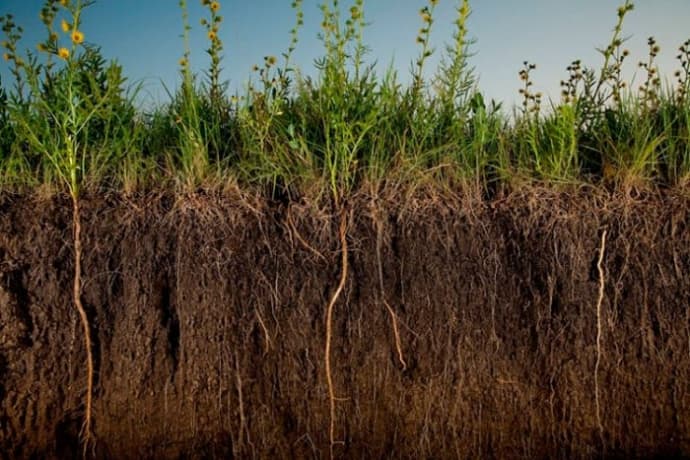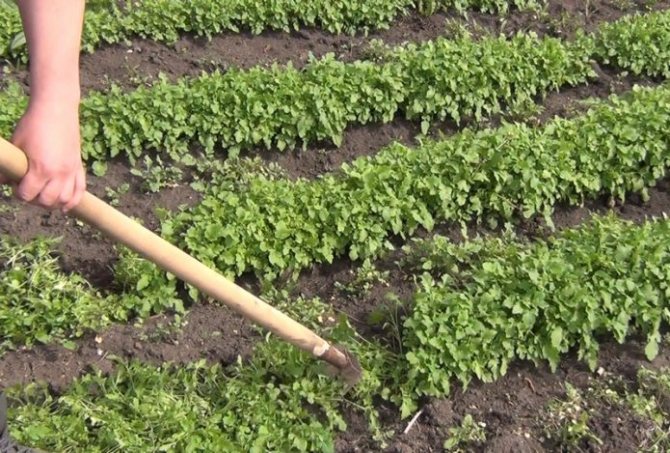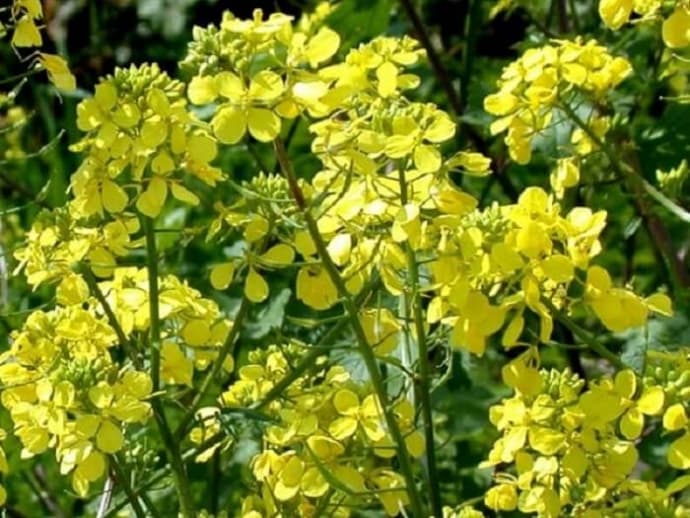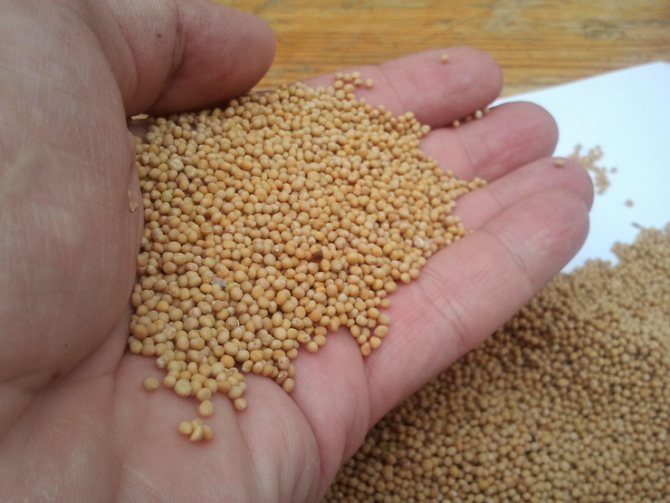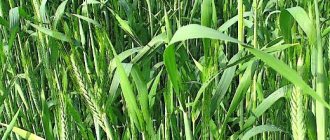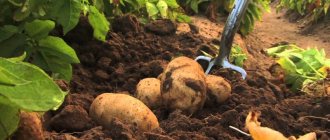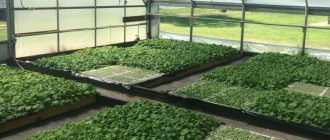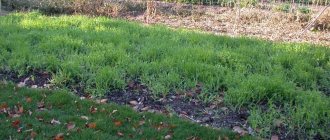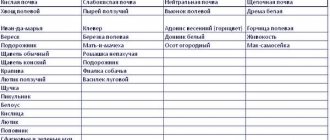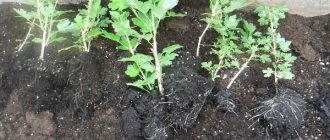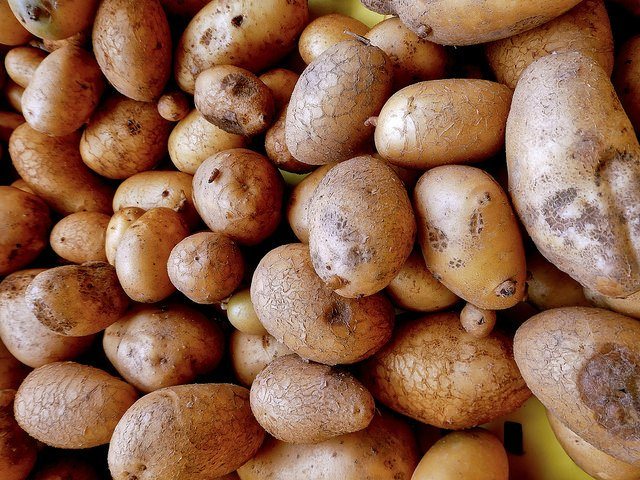
Many summer residents, due to the limited area of the site, are forced to place a potato field every year in the same place. This leads to severe depletion of the soil and the accumulation of pathogens and pest larvae in it. In order to at least partially prevent soil fatigue, in the fall, immediately after harvesting the potatoes, it is advisable to sow the site with fast-growing siderates from the cruciferous family. Whichever potato green manure you choose, you should follow several rules when using it:
- green manures are sown very often, with a solid carpet - on average, for one hundred square meters of land, you will need 400 grams of seeds of the green manure plants described below;
- the green mass is embedded in the soil at the beginning of flowering (you cannot wait for the formation of seeds, since they will clog the soil);
- before plowing, it is advisable to grind the greens and let them dry in place for one to two days;
- green manures are buried in the soil during the autumn digging of the soil (the optimal digging depth is an incomplete bayonet of a shovel).
Potato needs
During the growth period, tubers need nitrogen and phosphorus more than any other elements. Because the fruit of the potato is underground and located on the roots, it means that the root system must receive a lot of nutrients during the period of pouring the tubers. Roots need phosphorus.
But this food element will not be able to fully assimilate without the growth of green mass. Therefore, nitrogen is needed. Siderata for potatoes should contain a large amount of nitrogen and phosphorus. All that remains is to find out which plants contain these nutrients, buy seeds, and sow the field.
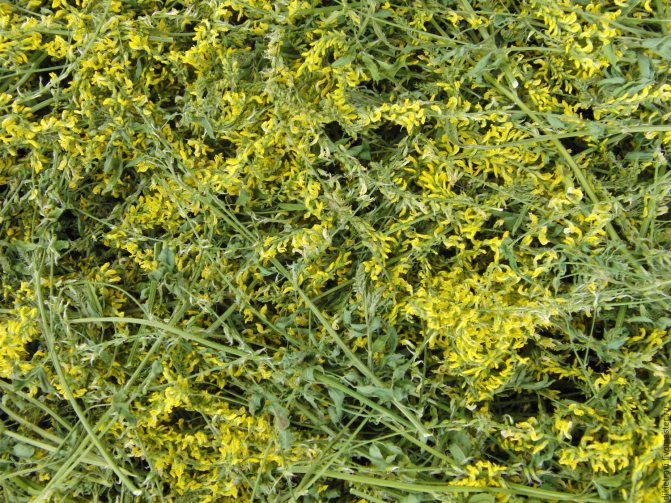

There are several methods of using green manure for potatoes:
- afterwards, when the roots of companion crops serve as a source of nutrition for plants;
- complete, if the aboveground and underground parts are used at the same time;
- mowing, when only the mown aboveground part is dug up, and the root system is left in the same place.
Depending on what nutrients have been applied to the potato field, one of the methods can be applied.
conclusions
For the growth of potato tops and pouring tubers, the best siderates are all types of legumes, which are preferably sown in prepared soil so that they germinate faster. You can sow any siderata after potatoes - they will more affect the fertility of the soil than the growth of potato tubers.
Did you like the article? Share with your friends:


Hello dear readers! I hope the information from the article was helpful. Always open for communication - comments, suggestions, what else you want to see on the site, and even criticism. Peace and happiness to everyone!
The best siderates for potatoes
According to gardeners who have tried many plants that enrich the land, the best green manure for potatoes is these are legumes:
- peas - can be sown simultaneously with tubers, because it rises earlier and attracts nutrients with its roots, namely nitrogen;
- alfalfa - a useful plant not only as a green manure after potatoes in August, but also goes to feed pets, is rich in nutrients useful for humans - you can use fresh herbs in cooking;
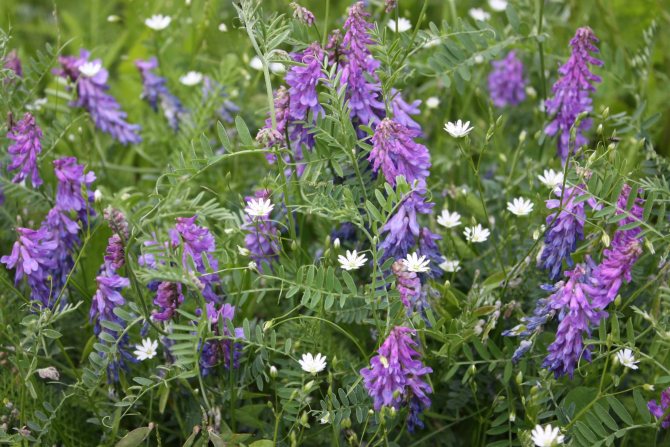

- lupine, beans which replace soybeans, greens are used in the nutrition of animals and people, contains 50% protein, 20% oil, similar in quality to olive;
- sweet clover - medicinal plant, melliferous plant, contains a lot of useful nutrients for pets, grows large - up to 2 m in height;
- Vika - one of the earliest ripening plant species, undemanding to air temperatures, suitable for feeding animals in green form and beans, used as green manure for the winter for potatoes.
The action of these plants on the soil is similar to manure, but it takes more time to decompose the manure, it costs more than seeds, and it also requires more labor - to prepare compost or scatter over the field and dig it up.
Potato green manure is easier, cheaper and more versatile to use, since plants can be used in other areas - for treatment, animal nutrition. In a word, planting companion plants will not be superfluous, but will bring double benefits.
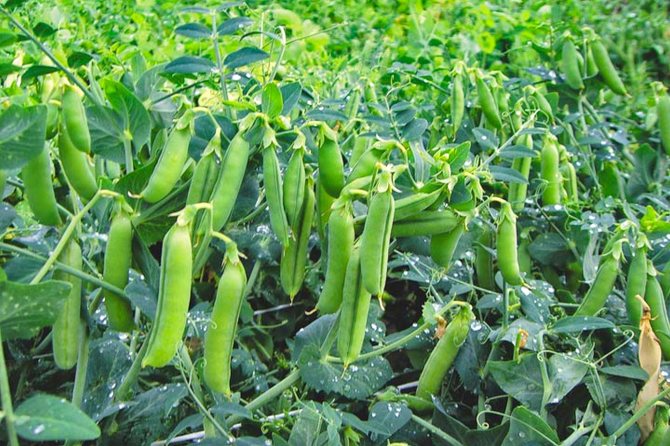

The benefits of green manure for potatoes:
- decaying plants activate the activity of soil bacteria, for which plant residues serve as food;
- maintain the level of moisture in the soil - it does not erode, is not washed out by rains;
- weeds cannot compete with green manure, because they have deep roots and grow quickly, taking useful substances from the weeds;
- contain phytoncides that garden pests do not like, there are fewer of them on plants and in the soil;
- enrich the soil with the main nutrient components - nitrogen, potassium and phosphorus.
The last point is the most important, since with the help of green manure it is possible to increase the yield without using mineral fertilizing.
Alternative plants
Mustard is not the only green manure, which is used to enrich the soil with useful substances. A number of green fertilizers are used by gardeners and gardeners, among them are:
- Legume family - lupine and vetch. It is recommended to plant peas, lentils and beans between the rows of potatoes, and after harvesting the fruits, dig up the soil along with the plants.
- Cruciferous family - mustard and oilseed radish.
- Cereals - rye, wheat, barley and oats.
All green manures enrich the soil with various trace elements and serve as an excellent baking powder. The constant use of the site leads to the depletion of the soil; green fertilizers - green manure are used to replenish it with nutrients.
Thanks to them, the soil replenishes the required amount of trace elements, phosphorus and allows a good potato crop to form and ripen. It is worth remembering that mustard alone cannot cope with the problem of complete depletion of the soil, in this case an integrated approach is recommended.
If you find an error, please select a piece of text and press Ctrl + Enter.
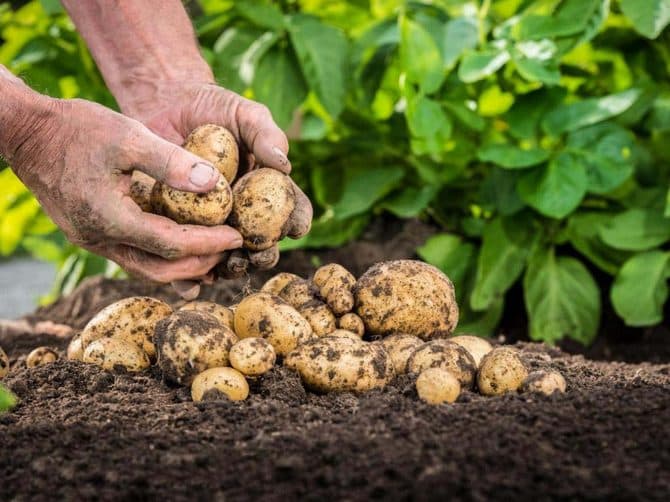

Hello colleagues - gardeners and summer residents! Today we will figure out how to grow a good harvest of potatoes without the use of mineral fertilizers, how to observe crop rotation, growing it in the same area.
Potatoes are a crop that requires a lot of nutrients. To form an average and good yield of 200-300 kg per hundred square meters, it requires mandatory feeding with nitrogen, phosphorus and potassium, microelements.
Most gardeners apply mineral fertilizers, but they are not cheap, not useful for the soil, not useful for people (let me remind you about nitrates). You can add manure, but where can you get it if the nearest farm is 100 km away? The way out is simple - sow green manure.
When to sow - in autumn or spring
The features of the growth of legumes are increased germination and a rapid increase in green mass due to the accumulation of nitrogen in the tissues. This feature is used by gardeners for their own purposes - to return plants back to the soil in order to enrich the soil and feed other crops.
Video: Siderata - potatoes in poor land
Legumes can grow twice during the summer season, so you need to use them in the spring and fall. Sowing rules for green manure for potatoes:
- seeds to be applied to the treated soil - for this, mineral fertilizing can be made, and the plants will be transferred to safe organic matter;
- in spring they are planted in late March and early May, depending on the temperature, in the fall one and a half months before the cold snap, the seedlings should grow up to 15 - 20 cm and have time to decompose in the ground - for this they need two weeks;
- It is necessary to mow the plants before the seeds appear, so that they do not fall back into the ground, since then it will be difficult to remove them.
Siderata need watering so that they quickly process nutrients. The fact is that useful nutrients can be located deep in the soil, and you can get them from there only with sufficient moisture. Therefore, in arid climates, it is recommended to regularly water the green manure in front of the potatoes in the spring before mowing.
Plants can be mowed before planting in the soil either manually or with a walk-behind tractor for the lawn.
Important! If the amount of greenery on the site has exceeded all expectations, you do not need to add all of it so that there is no acidification of plant residues. Part of the fertilizer is embedded in other beds for other crops
How to sow correctly?
Sowing
In the spring, the sowing process takes place according to the same scheme, only the time is selected when the air temperature has settled within 10 ° С... Low temperatures and their drop can provoke seeds to freeze.
Plant care
Mustard plant is unpretentious, therefore it does not require special care. Lack of moisture can affect the time of emergence of the first shoots and the development of shoots.
In arid regions, it is recommended to occasionally water future fertilizer.
When and how to mow?
The time when it is necessary to mow mustard directly depends on how quickly the seeds germinated and how long its shoots have reached the required length.
- So spring crops are ready for mowing in 7 weeks, during which time the mustard germinates and gains strength.
- For autumn plantings, the mowing time is determined by the height of the shoots, they should be about 15-20 cm long, usually it takes about 1.5 months to grow.
You can mow plants using:
Immediately after mowing, it is recommended to treat the cut plants with an EM preparation solution. This solution speeds up the fermentation process and enrichment of the soil with useful substances.
What green manures are not suitable for potatoes
Cereals are also sown as precursors - wheat, oats, rye, but there is not enough nitrogen and phosphorus in them, so they will not bring much benefit. The same goes for phacelia, white mustard, rapeseed.
For other garden plants, they are suitable for their nutritional composition, so it is better to use them before tomatoes, cucumbers. You can add more than the prescribed rate, but then the fertilizer will be processed longer in the soil, which is not good in spring, since you can be late with planting potatoes.
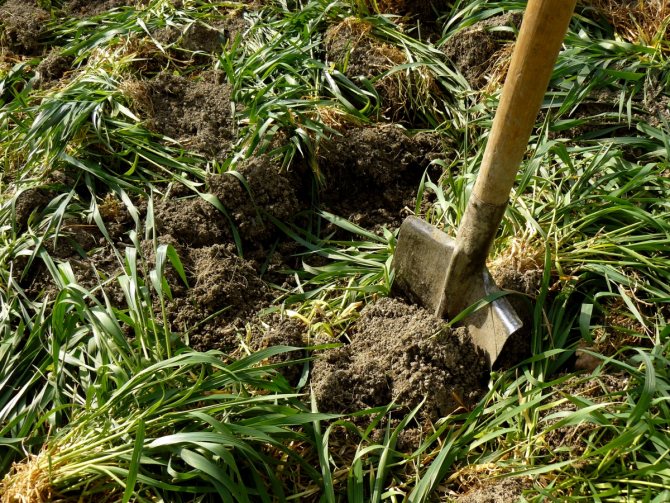

What green manures to plant after potatoes in the fall does not matter. It can be anything. Mustard disinfects the soil well, in addition - it is resistant to cold.
Sideration errors
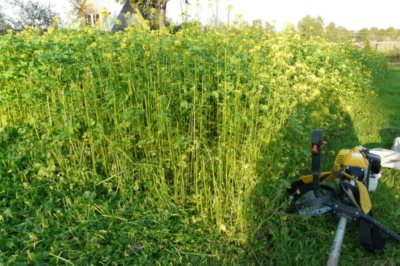

In order for green manure to benefit and increase soil fertility, it is imperative to follow the rules for planting and harvesting mustard. When growing it, you cannot:
- To allow high plant growth, a large amount of green dressing will turn sour.
- Plant in close proximity to cabbage, spinach, radish, horseradish and other cruciferous plants.
- Do not allow abundant flowering, at this time the stem thickens, which makes the decay process long.
Autumn work on the site
Siderata for potatoes in the fall are sown before the onset of cold weather, so that they have time to gain a thick green mass. Around the middle of September, you can start sowing, having previously well dug up the ground.In the fall, you can safely sow grain crops, as they are resistant to winter frosts.
Immediately after harvesting the potatoes, green manure can be planted:
- peas;
- oats;
- mustard.
You can scatter the seeds on plowed soil, and then level the surface with a rake. You can sow seeds in shallow grooves, and then sprinkle with earth. From above, the ground is covered with a small layer of compost for warmth. In the month of May, the siderates are mowed and embedded in the soil, then potatoes are planted.
Alternate green manures on the site, do not plant the same crop annually.
Experienced gardeners advise not to mow green manure winter crops before frost. If you leave them until spring, you will not have to dig up the ground for planting potatoes.
Spring work
Planting siderates in spring for potatoes should be planned in April or early May. The criterion for choosing the right sowing time should be warmed up soil.
Before planting the tubers (in 14-15 days), the green mass is mowed, and the earth with roots and plants is dug to the depth of a shovel. The green mass quickly decomposes, giving nutrients to the earth.
A big mistake is mowing green manure, which has managed to give seeds. Work must be carried out before the plants bloom.
What green manures are preferable for potatoes in spring? Gardeners believe that phacelia is a versatile fertilizer for a rich root crop. This plant is sown immediately after the snow melts, before planting potatoes, it manages to gain green mass and structure the soil at the same time - to make the earth loose. In addition, phacelia (like mustard) drives away the wireworm from the site.
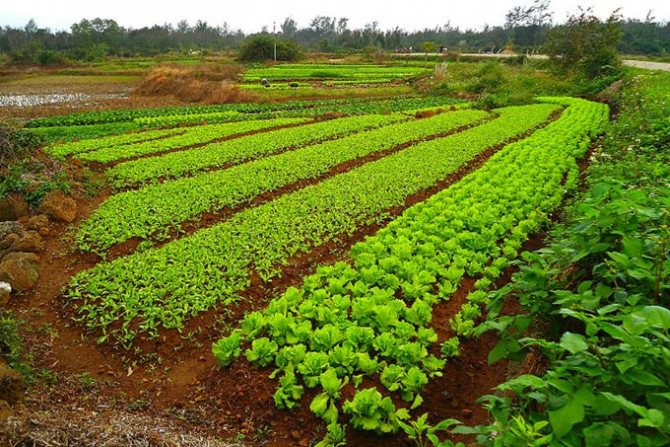

Too abundant green mass will not be able to completely overheat in the ground and will begin to rot, so remove the excess.
How deep should the tubers be planted? Prepare holes 5-6 cm deep. Experienced gardeners plant potatoes with mustard, as it prevents weeds and loosens the soil well. When the mustard reaches the height of the potato tops, it needs to be trimmed. If this is not done, it will interfere with the development of the tops. The cut mustard tops can be stacked between rows or composted.
Application methods
Siderata are used to improve the structure of the soil, so they can be planted twice a year - in the fall after harvesting and in the spring before planting crops in the beds. It is better to plant green manure for potatoes in the fall, but sometimes green manure is grown in the spring.
The advantage of growing green mass in autumn is that the vegetation cover protects the ground from freezing.
In the spring, after the snow melts, the plants are not removed from the site until May. Sometimes siderat is not harvested when planting tubers, as it can protect them from the negative effects of sunlight and spring frosts.
If you decide to mow the green manure before planting potatoes, then this is done about a month before the start of work. In this case, care must be taken that the green manure does not enter color, otherwise the decomposition process in the ground will slow down.
But after harvesting, you need to plant legumes, since even before the onset of frost, they will have time to gain biomass.
Green fertilizer can be used in several ways:
- complete embedding into the soil;
- mowing method;
- a good way.
The complete embedding of the green mass into the soil is carried out by digging a site to a depth of 10 cm. The mowing method - plants cut from another site are embedded in the soil. Otavny method - only plant roots are used on the site, and the green mass is mowed and used for other purposes.
Using the aftermath method, you can enrich two areas with green fertilizer at once: the roots remain in one area, and the mowed mass is sealed in another.
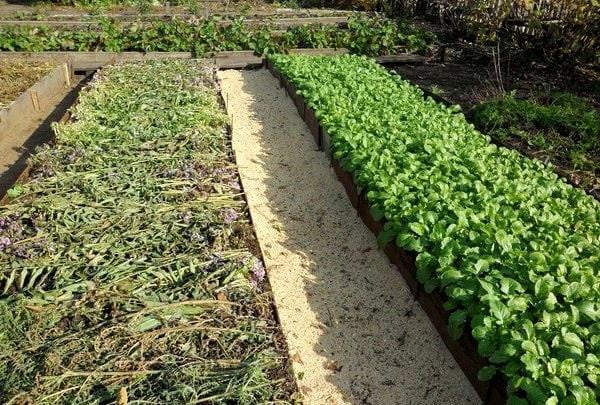

Description of green manure crops
Legumes are considered the most useful, as they enrich the soil with nitrogenous substances and humus. But cruciferous plants, along with cereals, also contribute to the enrichment of the soil. Let's consider their features.
Vika (mouse peas)
This culture is distinguished by an accelerated growing season and unpretentiousness to growing conditions. Mouse peas belong to the legume family, which means they accumulate a large amount of nitrogen between the root nodules. During the decomposition of roots in the ground, an active release of nitrogen occurs, without which potatoes cannot develop. The decomposition of the green mass of mouse peas enriches the soil with humus, significantly increasing its fertility.
# 1. Mustard white
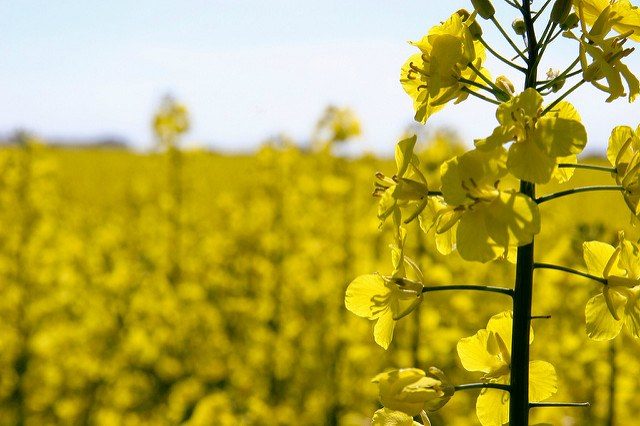

In my opinion, regular mustard is the most effective green manure for potatoes. So, when this green fertilizer is embedded during the flowering period, the soil receives 10-12 grams of nitrogen, 14 grams of potassium and about 2 grams of phosphorus per square meter of the garden, and in the form most easily digestible for plants. This allows you to get an increase in yield of 50-70% even without adding additional doses of organic matter (manure, compost) to the soil.
Mustard as a siderat for potatoes has several more undoubted advantages:
- It enriches the soil with a large amount of organic material, which is converted over time by soil bacteria into neutral humus. So, in just a month from the moment of germination, mustard gains up to a kilogram of green mass per square meter of land.
- The powerful branched roots of mustard loosen the soil to a considerable depth, making it more breathable and permeable.
- Mustard leaves and stems contain a special essential oil, which smell is not liked by many pests (for example, Colorado beetle and wireworm). Thanks to this, potatoes also suffer less from late blight, and the tubers are not affected by rot and scab.
- This green manure helps to cleanse the area from both annual and perennial weeds.
In the Middle Lane, mustard can be sown until the second decade of September, since the seeds of this plant begin to hatch already at a temperature of +1. 2 degrees, and young shoots easily tolerate frosts down to -6 degrees.
Mustard is sown immediately after the potato harvest. The seeds are sprinkled with a layer of soil no more than two centimeters. Seedlings usually appear in 5-7 days. The mustard plantings do not require any special care.

